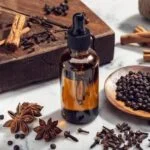Aromatherapy is a holistic healing treatment that uses natural plant extracts, known as essential oils, to promote physical and emotional well-being. When combined with massage therapy, it is believed to enhance the benefits of both practices. But the question remains: does aromatherapy massage work?
In this article, we delve into the science behind aromatherapy, explore the benefits of aromatherapy massage, examine different techniques, and hear from individuals who have experienced its effects firsthand. Whether you are a skeptic or a believer, this comprehensive guide aims to provide you with the information you need to make an informed decision about incorporating aromatherapy massage into your wellness routine.
The use of essential oils in aromatherapy is based on the belief that they can affect not only a person’s mood but also their physiology. The scent of the oils stimulate nerves in the nose which send impulses to the part of the brain that controls emotion and memory.
These impulses trigger positive responses that can help alleviate stress and anxiety, among other benefits. Furthermore, when applied to the skin during a massage, essential oils are believed to be absorbed into the bloodstream and affect various parts of the body.
In addition to stress relief and emotional well-being, many people turn to aromatherapy massage for pain management, improved circulation, and enhanced immunity. By combining therapeutic touch with carefully selected scents, proponents suggest that this practice can holistically address a variety of physical and mental concerns. In the following sections, we will take an in-depth look at these potential benefits and explore how aromatherapy massage may be able to improve overall quality of life.
The Science Behind Aromatherapy
Aromatherapy is a holistic healing treatment that uses natural plant extracts to promote health and well-being. Aromatherapy massage combines the benefits of touch with the therapeutic properties of essential oils to create a unique and effective form of therapy. But how do essential oils actually work to provide these benefits?
Essential oils, which are highly concentrated plant extracts, contain natural chemicals that have various effects on the body and mind when inhaled or absorbed through the skin during a massage. When inhaled, the aromatic compounds in essential oils stimulate the olfactory system, which is connected to the limbic system – the part of the brain that controls emotions and memories. This is why certain scents can evoke specific emotions or memories.
When applied to the skin during massage, essential oils are absorbed into the bloodstream and can have physical effects on the body. For example, lavender oil has been shown to have calming and sedative effects, while peppermint oil has been found to help relieve muscle pain and headache. These effects can be attributed to the chemical components of each essential oil, such as linalool in lavender or menthol in peppermint.
Moreover, research has shown that aromatherapy massage not only promotes relaxation but also reduces stress, relieves anxiety, improves sleep quality, manages pain from conditions like arthritis and fibromyalgia, and may even help improve quality of life for people with chronic diseases. The combination of touch therapy with inhalation or topical application of essential oils creates a powerful synergy that has been demonstrated to provide numerous health benefits for many individuals.
So yes, there is evidence that aromatherapy massage does work effectively in providing both physical and psychological relief.
| Benefits | Effects |
|---|---|
| Stress relief | Reduces stress and anxiety |
| Pain management | Relieves muscle pain and headaches |
| Improved sleep quality | Helps promote better sleep |
Benefits of Aromatherapy Massage
Aromatherapy massage has been used for centuries as a natural way to promote relaxation and alleviate various ailments. The use of essential oils in combination with massage techniques is believed to provide numerous benefits, including stress relief and pain management. But does aromatherapy massage work? Let’s explore some of the potential benefits of this holistic practice.
- Stress Relief: Aromatherapy massage is known to help reduce stress and anxiety levels. The combination of soothing essential oils and gentle massage strokes can help calm the mind and relax the body, promoting a sense of well-being.
- Pain Management: Certain essential oils used in aromatherapy massage, such as lavender and eucalyptus, are believed to have analgesic properties that can help alleviate pain. When applied topically during a massage, these oils may provide relief for sore muscles, headaches, and other sources of discomfort.
- Mood Enhancement: Aromatherapy massage is also thought to have mood-enhancing effects. Some essential oils, like citrus or peppermint, are known for their uplifting properties and may contribute to an improved overall mood during and after a massage session.
While individual experiences with aromatherapy massage may vary, many people attest to its beneficial effects on their physical and emotional well-being. Research into the effectiveness of aromatherapy massage continues, but anecdotal evidence suggests that it can indeed be an effective complementary therapy for various conditions. Whether you seek relief from stress, chronic pain, or simply want to enhance your overall sense of wellness, aromatherapy massage may offer a natural solution worth exploring.
Aromatherapy Massage Techniques
Aromatherapy massage combines the benefits of touch therapy with the powerful effects of essential oils. Here are some popular techniques used in aromatherapy massage:
1. Effleurage: This technique involves long, sweeping strokes that help to spread the essential oils over the body and relax tense muscles.
2. Petrissage: A deeper, kneading motion that can help to release muscle tension and improve circulation.
3. Tapotement: Also known as percussion, this technique involves rhythmic tapping or chopping movements that can stimulate the nerves and invigorate the body.
4. Friction: A focused, circular motion applied to specific areas of tension to help release knots and tightness in the muscles.
In addition to these techniques, aromatherapy massage also utilizes the power of scent to enhance the overall experience. The therapist may use diffusers or aroma sprays to fill the room with a calming or invigorating fragrance that complements the chosen essential oils for the massage.
When combined with proper massage techniques, the scents from essential oils can have a profound effect on mood, stress levels, and overall well-being. This combination of touch and scent is what makes aromatherapy massage such a unique and effective form of therapy for many individuals seeking relief from various ailments.
Overall, aromatherapy massage is a holistic approach that aims to address both physical and mental well-being through touch therapy and aromatic scents. The combination of these two elements can create a deeply relaxing and therapeutic experience for those seeking relief from stress, pain, or other health issues.
Case Studies
Many individuals have reported positive experiences with aromatherapy massage, citing a range of benefits including stress relief, pain management, improved mood, and relaxation. One study published in the International Journal of Neuroscience found that participants who received aromatherapy massage experienced significantly lower levels of anxiety and better sleep quality compared to those who received regular massage without essential oils.
This suggests that the combination of touch and scent used in aromatherapy massage may have a positive impact on psychological well-being.
In another case study conducted by researchers at the University of Maryland Medical Center, it was found that cancer patients who underwent aromatherapy massage reported reduced pain and nausea. The use of specific essential oils such as lavender, peppermint, and chamomile contributed to these beneficial effects. These findings indicate that aromatherapy massage could be a valuable complementary therapy for individuals dealing with chronic pain or undergoing medical treatments.
Furthermore, personal testimonials from individuals who have undergone aromatherapy massage often describe feelings of calmness, improved energy levels, and a greater sense of well-being after their sessions. While individual experiences may vary, there is growing evidence to support the potential effectiveness of aromatherapy massage in promoting physical and emotional wellness.
| Study | Findings |
|---|---|
| International Journal of Neuroscience Study | Aromatherapy massage led to lower anxiety levels and improved sleep quality |
| University of Maryland Medical Center Study | Cancer patients reported reduced pain and nausea after receiving aromatherapy massage |
Debunking Myths
When it comes to aromatherapy massage, there are several common misconceptions that can affect the way people perceive its effectiveness. In this section, we will address some of these myths and provide a clearer understanding of what aromatherapy massage really entails.
Myth #1: Aromatherapy Massage Is Just a Placebo Effect
One of the most prevalent misconceptions about aromatherapy massage is that its benefits are solely attributed to the placebo effect. However, research has shown that aromatherapy massage can have tangible effects on both the mind and body. The combination of touch and scent in aromatherapy massage can stimulate the limbic system in the brain, which plays a key role in emotions, behaviors, and sense of smell.
Myth #2: Aromatherapy Massage Only Provides Temporary Relief
Some skeptics believe that any relief provided by aromatherapy massage is short-lived and does not offer long-term benefits. While it’s true that the effects of aromatherapy massage may vary from person to person, many individuals report sustained improvements in their mental and physical well-being after regular sessions. The relaxation and stress-reducing effects of essential oils used in aromatherapy massage can have lasting positive impacts on one’s overall health.
Myth #3: Aromatherapy Massage Is Not Backed by Scientific Evidence
Another misconception about aromatherapy massage is that it lacks scientific support. However, numerous studies have demonstrated the therapeutic effects of essential oils used in aromatherapy massage. For example, lavender essential oil has been found to have calming properties, while peppermint essential oil may help with pain relief. Additionally, research has shown that the combination of massage therapy and essential oils can enhance overall well-being. This indicates that there is indeed scientific evidence supporting the effectiveness of aromatherapy massage.
Choosing the Right Essential Oils for Aromatherapy Massage
When it comes to aromatherapy massage, the choice of essential oils plays a crucial role in determining its effectiveness. Each essential oil has its own unique properties and benefits, so selecting the right ones can enhance the overall experience and therapeutic effects of the massage. Here is a guide to help you in choosing the right essential oils for aromatherapy massage.
Understanding Essential Oils
Before delving into the selection process, it’s important to understand the different types of essential oils available. Essential oils are concentrated plant extracts that have been used for centuries for their various therapeutic properties. They can be derived from flowers, leaves, bark, roots, or other parts of plants and are known for their distinct aromas and healing attributes.
Consider Your Needs and Goals
When choosing essential oils for aromatherapy massage, it’s important to consider your specific needs and goals. Are you looking for relaxation and stress relief? Or do you need something to uplift your mood and boost energy levels? Different essential oils have different effects on the mind and body, so identifying your intentions will help in narrowing down the options.
Popular Essential Oils for Aromatherapy Massage
Some popular essential oils used in aromatherapy massage include lavender for its calming properties, peppermint for its invigorating effect, eucalyptus for respiratory support, chamomile for relaxation, and rosemary for muscle tension relief. These are just a few examples of essential oils that are commonly used in aromatherapy massage due to their well-documented benefits on mental and physical well-being. It’s important to research each oil thoroughly before use to ensure it aligns with your needs and preferences.
By understanding essential oils, considering your needs and goals, and familiarizing yourself with popular options, you can make an informed decision when choosing the right essential oils for your aromatherapy massage. Ultimately, finding the perfect combination of scents that resonate with you can enhance the therapeutic benefits of the massage experience.
Conclusion
In conclusion, the question of whether aromatherapy massage works is a complex one with no definitive answer. While there is scientific evidence to support the benefits of essential oils and touch therapy in promoting relaxation, stress relief, and pain management, the effectiveness of aromatherapy massage varies from person to person.
The power of scent and touch can have a profound impact on one’s well-being, but individual responses to aromatherapy can differ based on factors such as personal preferences, health conditions, and environmental influences.
It is important to acknowledge that while some individuals may experience significant improvements in their physical and mental health through aromatherapy massage, others may not perceive any noticeable effects. Additionally, the use of essential oils should be approached with caution, as they can have potential side effects and interactions with certain medications. It is crucial for individuals to consult with a qualified healthcare professional before incorporating aromatherapy massage into their wellness routine.
Overall, whether aromatherapy massage works ultimately depends on an individual’s unique needs and circumstances. While it may not be a cure-all for everyone, many people find value in the holistic approach to well-being that aromatherapy massage offers. By understanding the science behind essential oils and touch therapy and being mindful of personal experiences and considerations, individuals can make informed decisions about incorporating aromatherapy massage into their self-care practices.
Frequently Asked Questions
What Are the Disadvantages of Aromatherapy Massage?
Aromatherapy massage can have some disadvantages, such as potential skin irritation or allergic reactions to the essential oils used. Additionally, some people may not enjoy the strong scents associated with aromatherapy.
What Are the Main Benefits of Aromatherapy Massage?
The main benefits of aromatherapy massage include stress relief, improved mood, relaxation, and potential relief from muscle tension or pain. The combination of massage techniques and aromatherapy oils can create a soothing and therapeutic experience for many individuals.
How Often Should I Get an Aromatherapy Massage?
The frequency of aromatherapy massages depends on individual needs and preferences. Some people may benefit from weekly sessions to manage chronic conditions or high stress levels, while others may find monthly treatments sufficient for maintaining overall well-being. It’s best to discuss your specific needs with a qualified aromatherapist or massage therapist for personalized recommendations.

Are you looking for a natural way to improve your health and wellbeing?
If so, aromatherapy may be the answer for you.





